How to know you are lactose intolerant. Lactose Intolerance: Symptoms, Causes, and Dietary Restrictions Explained
What are the symptoms of lactose intolerance. How is lactose intolerance diagnosed. What causes lactose intolerance. What foods should be avoided with lactose intolerance. How can lactose intolerance be managed through diet. What are the most common dietary restrictions besides lactose intolerance. How do dietary restrictions impact menu planning for events.
Understanding Lactose Intolerance: A Common Digestive Disorder
Lactose intolerance is a widespread digestive condition affecting approximately two-thirds of the global population. This disorder stems from a deficiency in lactase, an enzyme crucial for breaking down lactose, the primary carbohydrate found in milk and dairy products. The prevalence of lactose intolerance varies significantly across different ethnic groups and geographical regions, making it a vital consideration in dietary planning and nutritional management.
To fully grasp the impact of lactose intolerance, it’s essential to understand its underlying mechanism. When the body lacks sufficient lactase, undigested lactose travels through the digestive system, leading to fermentation by gut bacteria. This process results in the production of gases and other byproducts that cause the characteristic symptoms of lactose intolerance.

Key Symptoms of Lactose Intolerance
- Bloating
- Abdominal pain
- Flatulence
- Diarrhea
- Nausea
- Stomach rumbling
These symptoms typically manifest within 30 minutes to 2 hours after consuming lactose-containing foods. However, the severity and onset of symptoms can vary among individuals, depending on factors such as the amount of lactose consumed and an individual’s overall gut health.
Diagnosing Lactose Intolerance
How is lactose intolerance diagnosed? Several methods are employed by healthcare professionals to diagnose lactose intolerance:
- Hydrogen breath test: This non-invasive test measures the amount of hydrogen in a person’s breath after consuming a lactose-containing solution.
- Lactose tolerance test: This involves measuring blood sugar levels before and after consuming a lactose-containing drink.
- Stool acidity test: Primarily used for infants and children, this test checks the acidity of stool samples.
- Genetic testing: This can identify mutations in the gene responsible for producing lactase.
It’s important to note that self-diagnosis of lactose intolerance is not recommended, as symptoms can overlap with other digestive disorders. Consulting a healthcare provider for proper diagnosis is crucial for effective management and to rule out other potential underlying conditions.

The Science Behind Lactose Intolerance: Causes and Mechanisms
What causes lactose intolerance? The root cause of lactose intolerance lies in the body’s inability to produce sufficient amounts of the enzyme lactase. This deficiency can be categorized into three main types:
- Primary lactose intolerance: The most common form, resulting from a gradual decrease in lactase production as a person ages.
- Secondary lactose intolerance: Occurs when the small intestine decreases lactase production due to illness, injury, or surgery.
- Congenital lactose intolerance: A rare condition where babies are born with little or no ability to produce lactase.
The development of lactose intolerance is closely tied to evolutionary and genetic factors. In most mammals, including humans, lactase production naturally decreases after weaning. However, some populations have developed a genetic mutation that allows for continued lactase production into adulthood, a trait known as lactase persistence.
This genetic variation is more common in populations with a long history of dairy consumption, such as those of Northern European descent. Understanding these genetic factors can provide insights into the prevalence of lactose intolerance across different ethnic groups and inform personalized dietary recommendations.
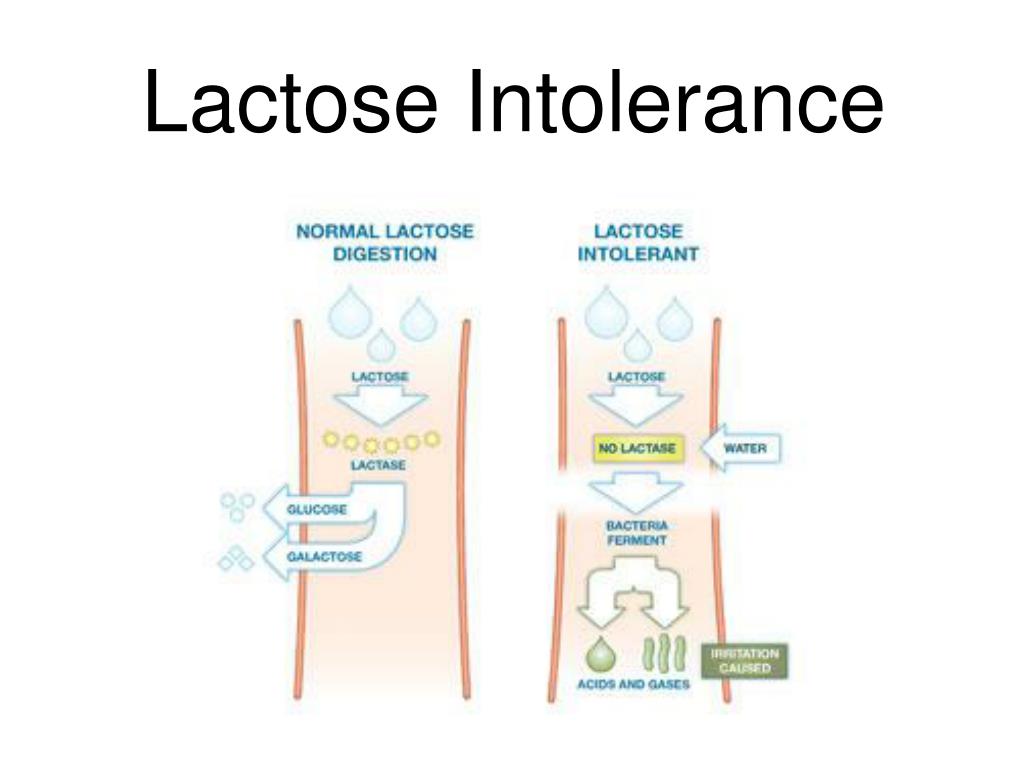
Navigating Dietary Choices: Foods to Avoid and Alternatives
What foods should be avoided with lactose intolerance? Individuals with lactose intolerance need to be vigilant about their dietary choices to prevent uncomfortable symptoms. The primary foods to avoid or limit include:
- Milk (including whole, low-fat, and skim)
- Cream and half-and-half
- Ice cream and frozen yogurt
- Soft cheeses (e.g., ricotta, cottage cheese)
- Butter and buttermilk
- Whey protein
However, it’s important to note that lactose tolerance can vary significantly among individuals. Some people with lactose intolerance may be able to consume small amounts of dairy without experiencing symptoms, while others may need to eliminate it entirely.
Lactose-Free Alternatives and Hidden Sources
For those needing to avoid lactose, numerous alternatives are available:
- Plant-based milk (e.g., almond, soy, oat, coconut)
- Lactose-free milk and dairy products
- Hard, aged cheeses (e.g., Parmesan, cheddar)
- Yogurt with live active cultures
- Dairy-free ice creams and desserts
It’s crucial to be aware of hidden sources of lactose in processed foods, including:
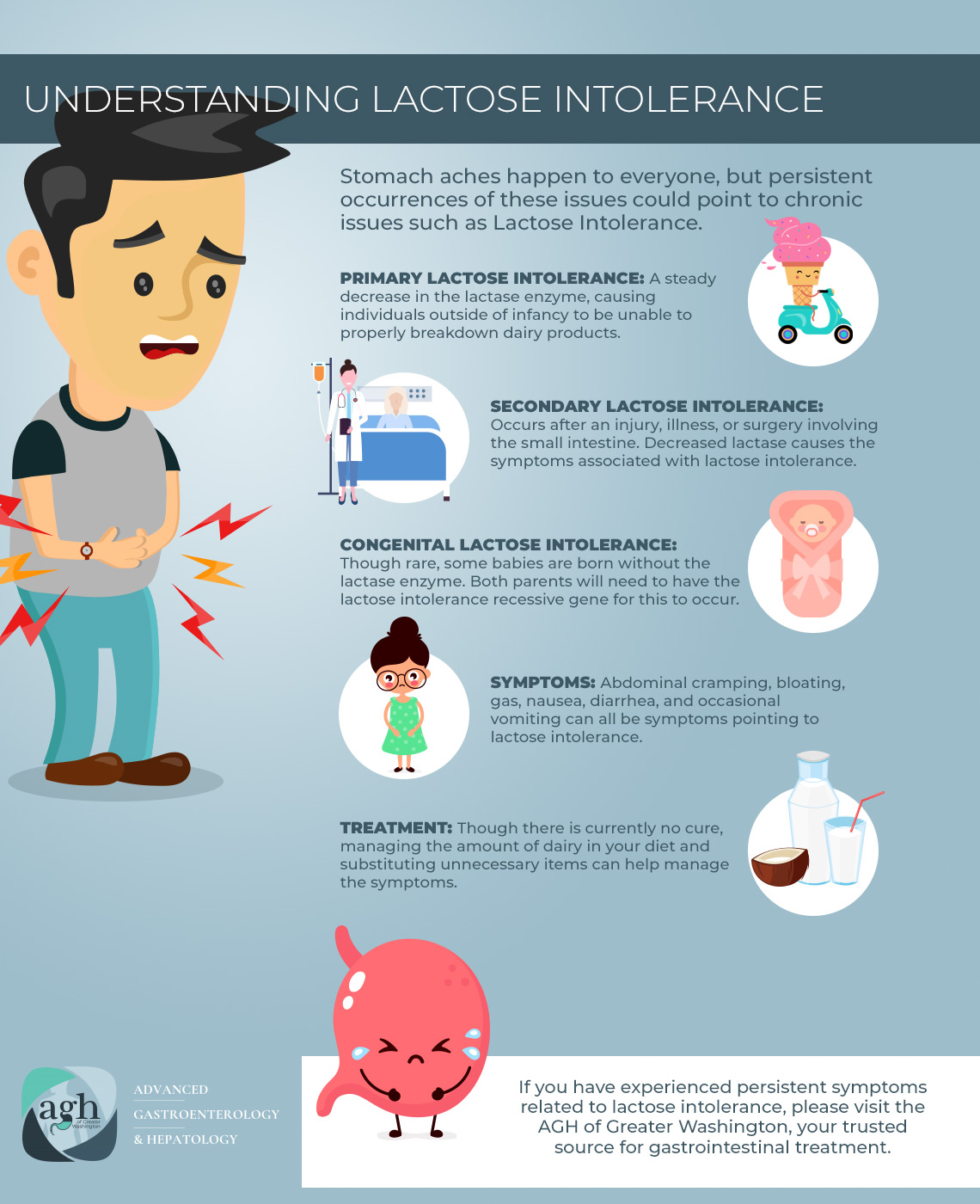
- Baked goods and bread products
- Processed breakfast cereals
- Instant soups and meal mixes
- Salad dressings and sauces
- Some medications and supplements
Reading food labels carefully and looking for terms like “milk solids,” “whey,” and “lactose” can help individuals avoid unexpected sources of lactose in their diet.
Managing Lactose Intolerance: Dietary Strategies and Treatments
How can lactose intolerance be managed through diet? Managing lactose intolerance typically involves a combination of dietary adjustments and potential use of lactase supplements. Here are some effective strategies:
- Gradual reduction: Slowly reducing lactose intake can help identify personal tolerance levels.
- Lactase enzyme supplements: These can be taken with dairy-containing meals to aid in lactose digestion.
- Consuming dairy with other foods: This can slow digestion and reduce symptom severity.
- Opting for fermented dairy: Products like yogurt and kefir may be better tolerated due to their lower lactose content.
- Choosing lactose-free alternatives: Many dairy products are available in lactose-free versions.
It’s important to work with a healthcare provider or registered dietitian to develop a personalized management plan. This ensures that nutritional needs are met while avoiding symptoms associated with lactose consumption.

Nutritional Considerations for Lactose-Free Diets
When eliminating or reducing dairy intake, it’s crucial to ensure adequate intake of nutrients typically found in dairy products, particularly calcium and vitamin D. Alternative sources of these nutrients include:
- Calcium-fortified plant-based milk and juices
- Leafy green vegetables (e.g., kale, collard greens)
- Canned fish with soft bones (e.g., sardines, salmon)
- Calcium-set tofu
- Fortified cereals and breads
Regular monitoring of nutrient intake and potential supplementation under medical guidance can help prevent deficiencies associated with a dairy-free diet.
Beyond Lactose: Exploring Other Common Dietary Restrictions
What are the most common dietary restrictions besides lactose intolerance? While lactose intolerance is a significant dietary concern, it’s just one of many dietary restrictions that individuals may face. Understanding these various dietary needs is crucial for inclusive meal planning and catering. Some other common dietary restrictions include:

Gluten Sensitivity and Celiac Disease
Gluten-related disorders affect 1-7% of the global population. Celiac disease is an autoimmune disorder triggered by gluten consumption, leading to intestinal damage. Non-celiac gluten sensitivity, while not autoimmune, can cause similar symptoms. Both conditions require strict adherence to a gluten-free diet, avoiding wheat, barley, and rye products.
Vegetarianism and Veganism
Vegetarian diets exclude meat, with variations including:
- Lacto-vegetarian: Includes dairy but excludes eggs
- Ovo-vegetarian: Includes eggs but excludes dairy
- Lacto-ovo-vegetarian: Includes both eggs and dairy
Vegan diets exclude all animal products, including dairy, eggs, and honey. These diets require careful planning to ensure adequate nutrient intake, particularly for protein, vitamin B12, iron, and zinc.
Food Allergies
Common food allergies include:
- Peanuts and tree nuts
- Shellfish and fish
- Eggs
- Soy
- Wheat
Food allergies can range from mild to severe, with some capable of causing life-threatening anaphylactic reactions. Strict avoidance of allergens is crucial for affected individuals.

Religious Dietary Restrictions
Various religions have specific dietary guidelines, such as:
- Halal (Islamic dietary laws)
- Kosher (Jewish dietary laws)
- Hindu vegetarianism
- Buddhist vegetarianism
These restrictions can involve specific food preparation methods, avoidance of certain animal products, or adherence to vegetarian or vegan diets.
The Impact of Dietary Restrictions on Event Planning and Catering
How do dietary restrictions impact menu planning for events? The increasing prevalence of various dietary restrictions has significantly influenced event planning and catering services. Accommodating diverse dietary needs requires careful consideration and planning to ensure all guests can enjoy safe and satisfying meals.
Strategies for Inclusive Menu Planning
- Gather dietary information in advance: Include questions about dietary restrictions in event RSVPs or registration forms.
- Offer diverse options: Provide a range of dishes that cater to different dietary needs, including vegetarian, vegan, gluten-free, and dairy-free options.
- Clear labeling: Clearly label all dishes with their ingredients and potential allergens.
- Train staff: Ensure catering staff are knowledgeable about the ingredients in each dish and can answer guest questions.
- Separate preparation areas: Use dedicated preparation areas and utensils for allergen-free dishes to prevent cross-contamination.
- Flexibility: Be prepared to make last-minute accommodations for unexpected dietary needs.
By implementing these strategies, event planners and caterers can create inclusive dining experiences that respect and accommodate various dietary restrictions.

The Rise of Specialized Catering Services
The growing awareness of dietary restrictions has led to the emergence of specialized catering services that focus on specific dietary needs. These services offer expertise in areas such as:
- Allergen-free catering
- Gluten-free meal preparation
- Vegan and vegetarian catering
- Kosher and Halal food services
These specialized caterers can provide valuable resources and peace of mind for event planners dealing with complex dietary requirements.
The Future of Dietary Management: Innovations and Trends
As our understanding of dietary restrictions and food sensitivities continues to evolve, so do the solutions and innovations in this field. Several emerging trends and technologies are shaping the future of dietary management:
Personalized Nutrition
Advancements in genetic testing and microbiome analysis are paving the way for more personalized dietary recommendations. This approach takes into account an individual’s genetic predisposition to food sensitivities, allowing for tailored dietary plans that optimize health and minimize discomfort.

Alternative Protein Sources
The development of plant-based and lab-grown meat alternatives is expanding options for those with dietary restrictions. These innovations not only cater to vegetarian and vegan diets but also provide new possibilities for individuals with allergies to traditional protein sources.
Smart Food Labels and Apps
Technology is making it easier for consumers to navigate dietary restrictions. Smart food labels that can be scanned with smartphones to reveal detailed ingredient information, and apps that help identify suitable foods based on individual dietary needs, are becoming increasingly sophisticated and widely available.
Enzyme Supplements and Therapies
Research into enzymatic therapies for conditions like lactose intolerance and celiac disease is ongoing. Future developments may lead to more effective supplements or treatments that allow individuals to consume previously restricted foods without adverse effects.
Gut Microbiome Modulation
Emerging research on the gut microbiome’s role in food sensitivities is opening new avenues for dietary management. Probiotics and prebiotics tailored to support digestive health and potentially alleviate symptoms of food intolerances are areas of active study.
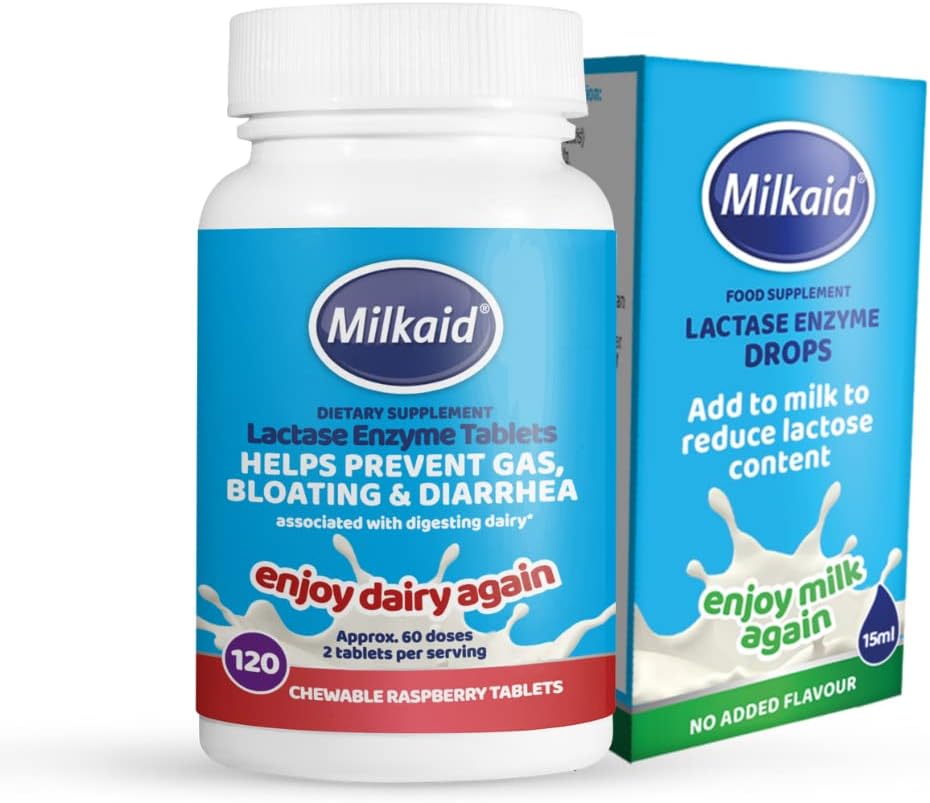
These innovations hold promise for improving the quality of life for individuals with dietary restrictions and simplifying the process of adhering to specialized diets. As research progresses, we can expect to see more integrated approaches to dietary management that combine personalized nutrition, technological tools, and targeted therapies.
In conclusion, understanding and accommodating dietary restrictions, from lactose intolerance to various other food sensitivities and preferences, is becoming increasingly important in our diverse society. As we continue to advance our knowledge and develop new solutions, the goal remains to ensure that everyone can enjoy safe, nutritious, and satisfying meals, regardless of their dietary needs. By staying informed about these developments and implementing inclusive practices, we can create a more accommodating food environment for all.
The 10 Most Common Dietary Restrictions
Food allergies or sensitivities, religious practices, and ideological beliefs are some of the main reasons people rely on specific diets or follow dietary restrictions.
While some restrictions are meant to prevent life threatening events, others speak to your guest’s personal and moral beliefs. Either way, they’re equally important.
Therefore, if you’re planning an event — or catering for one — it would be best to become familiarized with some of the most common dietary restrictions.
Here are 10 dietary restrictions you should know about.
Lactose intolerance is a digestive disorder caused by a deficiency of the enzyme lactase, which helps digests lactose — the main type of carb in milk (1, 2).
However, about two-thirds of the world’s population stops producing the enzyme after weaning. Thus, they become lactose intolerant (2, 3).
Having lactose intolerance means that symptoms like bloating, abdominal pain, flatulence, and diarrhea, may occur after consuming lactose-containing foods, including milk and milk products (1, 2).
However, studies suggest that some people with lactose intolerance may consume up to 12 grams of lactose per day without showing symptoms — roughly the amount of lactose in an 8 ounce (240 mL) cup of milk (1, 2).
Current treatments for lactose intolerance include reducing or eliminating its intake or taking lactase pills. Nevertheless, not all milk products are the same, and people may tolerate some products better than others.
Here are some milk product recommendations to consider when planning your event’s menu (1, 4):
- Lactose-free milk. This milk alternative is simply milk treated with lactase, which digests lactose for you. It’s nutritionally identical to regular milk, only slightly sweeter.
- Fermented dairy products. People with lactose intolerance may be able to tolerate yogurt, kefir, sour cream, Leben, labneh, mursik, and viili due to the partial digestion of lactose via bacterial fermentation.
- Hard-mature cheeses.
 Cheeses such as Parmesan and Granna Padano are naturally lactose-free and may be tolerated by most people.
Cheeses such as Parmesan and Granna Padano are naturally lactose-free and may be tolerated by most people. - Butter. While butter comprises the fatty fraction of milk, it may contain residual lactose. However, clarified butter or ghee is generally safe for people with lactose intolerance.
Summary
People with lactose intolerance have trouble digesting lactose-containing foods such as milk and some milk products. They are better off when presented with lactose-free alternatives.
Gluten is one of the main proteins in wheat, but it’s also found in barley and rye. It’s responsible for giving elasticity and viscosity to baked goods (5, 6).
However, two gluten-related disorders affect 1–7% of people worldwide. They’re celiac disease and non-celiac gluten sensitivity (5).
Celiac disease is a gluten-induced autoimmune disorder that leads to inflammation and damage to the small intestine (5, 7).
Common symptoms of celiac disease include abdominal pain, diarrhea, and weight loss due to nutrient malabsorption. Other atypical symptoms include skin rashes, anemia, and osteoporosis (5, 7).
On the other hand, non-celiac gluten sensitivity is a nonallergic and nonautoimmune condition also caused by gluten consumption that leads to symptoms similar to those of celiac disease (5, 8, 9).
Aside from reacting to gluten-containing foods, people with non-celiac gluten sensitivity also tend to present multiple food intolerances, including those to cow’s milk, egg, and other foods (8).
Current treatments for both disorders rely on following a strict and lifelong gluten-free diet (7, 9, 10, 11).
This means that foods containing ingredients made from wheat, barley, and rye, such as bread, pasta, cereal, crackers, baked goods, and beer, are off-limits. Some people with celiac disease may also react to oats due to cross contamination during processing (7).
Instead, you may rely on naturally gluten-free grains, starches, and flours, such as rice, quinoa, corn, tapioca, millet, amaranth, buckwheat, sorghum, potatoes, yucca, plantain, beans, lentils, and chickpeas.
Summary
Gluten-free diets help prevent health complications among people with celiac disease and non-celiac gluten sensitivity caused by gluten consumption. This means that foods and ingredients like wheat, barley, and rye should be avoided.
Vegetarianism is a dietary pattern that relies mainly on plant-based foods and avoids meats, poultry, and fish.
However, multiple variations allow for some animal-based foods, including (12):
- Lacto-vegetarians: exclude meat, poultry, and fish but include milk and milk products
- Ovo-vegetarians: exclude meat, poultry, and fish but includes eggs
- Lacto-ovo-vegetarians: exclude meat, poultry, and fish but includes milk, milk products, and eggs
- Pescatarians: exclude meat and poultry but includes fish, milk, milk products, and eggs
- Semi-vegetarians or flexitarians: mostly vegetarians that occasionally consume meat, meat products, poultry, and fish
Since animal-based protein sources are either limited or avoided on a vegetarian diet, including plant-based proteins in your menu would be ideal.
Try to emphasize pulses or legumes (peas, beans, chickpeas, and lentils), quinoa, soy, and soy-derived products like tofu or tempeh (13, 14).
Other important plant-derived foods include fruits, vegetables, whole grains, nuts, and seeds (15).
Summary
Vegetarians primarily eat plant-based foods and avoid meat, poultry, and fish. However, some forms of vegetarianism may allow for dairy, eggs, fish, and even meat.
Vegan diets are a stricter form of vegetarianism in which all animal and animal-derived foods are avoided (15, 16).
This means that ingredients like gelatin, fish-derived sauces, honey, bee pollen, casein, and whey, are off-limits.
Veganism is mainly linked to religious, ethical, and environmental beliefs. However, it may also provide some health benefits, including weight loss and a lower risk of chronic diseases like heart disease, some cancers, and type 2 diabetes (17, 18, 19).
Like vegetarianism, veganism has its variations.
These include the fruitarian diet, which relies on fruits, nuts, seeds, some vegetables, as well as the raw vegan diet, which primarily relies on uncooked plant-based foods (12, 20).
Make sure to include various whole grains, fruits, vegetables, and plant-based protein sources — both cooked and raw when possible — if hosting a vegan event.
Summary
Vegans rely solely on plant-based foods and avoid all types of animal and animal-derived foods and products.
Kosher refers to the dietary principles followed by Jewish law, which dictates which foods are allowed.
Generally, a kosher diet centers around three main features: allowed animals, the prohibition of blood, and the prohibition of mixing dairy and meat (21).
However, other aspects must be considered to deem a food as kosher, including the slaughtering and meat processing method.
Here’s a list of the main considerations to keep in mind when planning a kosher menu:
- Meat.
 Meat and meat products must come from the forequarters of ruminant animals with split hooves, such as cows, lambs, goats, sheep, deer, and oxen.
Meat and meat products must come from the forequarters of ruminant animals with split hooves, such as cows, lambs, goats, sheep, deer, and oxen. - Dairy. Dairy products like milk, cheese, and yogurt must come from kosher animals and can’t be mixed with meat and poultry. Some people wait up to 6 hours to consume dairy after eating meat or poultry.
- Fish. Fish must have fins and scales simultaneously to be considered kosher. This includes sardines, anchovies, salmon, tuna, and mackerel.
- Poultry. Chicken, turkey, goose, quail, and dove are permitted.
- Slaughtering method. Animals for meat, poultry, and dairy products must be slaughtered in a specific way by a certified butcher.
- Prohibition of blood. You must remove all blood from meat, poultry, and eggs before cooking to ensure the cleanliness of the food.
- Pareve. Pareve refers to foods considered neutral for mixing purposes, meaning that you can serve them with either meat or dairy.
 They include fish, eggs, grains, nuts, fruits, and vegetables.
They include fish, eggs, grains, nuts, fruits, and vegetables. - Equipment. Utensils used to prepare, clean, and serve food should only be used for kosher foods to avoid contamination with nonkosher ones. You can’t use the same utensils to prepare meat and dairy.
As for foods to avoid, the kosher diet also explicitly prohibits pork meat.
Summary
Kosher refers to the Jewish dietary law. It states which foods are allowed and prohibited, as well as how to prepare and process them.
The ketogenic, or keto, diet is a high fat, very low carb diet that has gained popularity in the last few years.
While weight loss is one of the main reasons behind the diet’s popularity, some may follow it for its blood-sugar benefits and other metabolic effects (22, 23).
The keto diet restricts carbs to 20–50 grams per day while encouraging an intake of up to 70% of your daily calories from fat (22).
This means that grains, legumes, starchy vegetables, and most fruits must be limited or eliminated, along with high sugar foods like candy, fruit juices, sodas, and desserts.
If you’re accommodating someone following a keto diet, make sure your menu includes:
- Protein: meat, chicken, fish, eggs, turkey, processed meats, cheese, and plant-based proteins such as tofu or tempeh
- Fats: nuts, seeds, cream cheese, butter, avocado, and healthy oils like coconut or olive oil
- Nonstarchy vegetables: cucumber, tomatoes, leafy greens, onions, broccoli, etc
- Low sugar fruits: moderate amounts of berries
Summary
The keto diet limits carbs to 20–50 grams per day. Therefore, grains, legumes, most fruits, and starchy vegetables are not allowed. Instead, protein, fats, and nonstarchy vegetables are permitted.
People with diabetes have an impaired ability to metabolize carbs either because they produce little to no insulin (type 1 diabetes) or can’t absorb insulin (type 2 diabetes) (24).
Insulin is the hormone that allows sugar from carbs to enter your cells. Thus, if its production or action is impaired, it may lead to high blood sugar levels (24).
Thus, if its production or action is impaired, it may lead to high blood sugar levels (24).
Dietary recommendations for people with diabetes promote a healthy eating pattern that includes moderate amounts of all food groups.
Some healthcare professionals suggest focusing on foods with a low glycemic index (GI), which won’t spike blood sugar levels after consuming them (25).
These include high fiber foods like whole grains and legumes, as well as certain lower sugar fruits, such as berries, melons, and apples (26).
Other foods you may include for a diabetes-friendly menu include lean proteins, dairy, and starchy and nonstarchy vegetables.
However, make sure to limit sugary drinks, dressings, and sauces, along with refined grains, sweets, and desserts.
Summary
A diabetes-friendly diet provides moderate amounts of foods from all food groups while limiting refined grains and high sugar foods.
A dairy-free diet differs from a lactose-free diet in that it excludes all dairy products, including cheese, yogurt, and other fermented products, as well as cream, and butter.
Unlike lactose intolerance, in which other milk nutrients are well tolerated, dairy-free diets are often part of cow’s milk allergy treatment.
A cow’s milk allergy is an allergic reaction to the proteins in cow’s milk — either casein or whey. In those with a cow’s milk allergy, the immune system triggers a response when it recognizes the presence of either or both of them (27).
Therefore, make sure to eliminate all dairy products from your menu if hosting an event for people with this allergy, and consider plant-based dairy substitutes made from nuts, seeds, and nondairy milks.
Summary
Dairy-free diets eliminate milk and milk products, including cheese, butter, yogurt, and other fermented products and lactose-free varieties.
Low carb diets are very similar to the keto diet in that both restrict carbs to keep insulin levels low throughout the day.
There isn’t a specific way to follow a low carb diet. As such, there are many variations with strict and flexible carb allowances. Still, they usually stay below 120 grams of carbs per day (28).
Still, they usually stay below 120 grams of carbs per day (28).
Furthermore, they all limit alcohol, refined sugar, and highly processed foods.
Overall, avoid serving sugary drinks, white bread, pasta, and rice, and limit the number of starchy vegetables, grains, and legumes on your menu.
Instead, emphasize animal-based proteins, nonstarchy vegetables, fruits, nuts, seeds, and other healthy fat choices like avocado and olives.
Summary
Low carb dietary restrictions are very similar to the keto diet. Make sure to emphasize animal-based proteins, nonstarchy vegetables, and healthy fats while limiting grains, sugary, and processed foods.
Food allergies lead to adverse reactions from your immune system when consuming certain foods.
They affect about 10% of adults and 8% of children worldwide, and some may lead to life threatening reactions (29, 30).
Here’s a list of some of the most common food allergies:
- Wheat.
 Wheat is one of the most common allergens, leading to adverse reactions to wheat ingredients (4).
Wheat is one of the most common allergens, leading to adverse reactions to wheat ingredients (4). - Nuts. This category includes peanuts and tree nuts, namely almonds, Brazil nuts, walnuts, hazelnut, cashews, pine nuts, macadamia nuts, and pistachios. They’re most common in children, as about 15–22% outgrow them (31, 32).
- Fish and shellfish. Fish allergies may be caused by the intake, handling, or inhalation of fish, toxins, and parasites. A shellfish allergy is commonly caused by the intake of shrimps, crabs, lobsters, clams, oysters, and mussels (33, 34).
- Eggs. People with egg allergies may react to both the white and the yolk. It’s also important to account for foods that contain eggs, such as baked goods or pasta (35).
- Soy. Soy allergies are more common in children, who may react to soy and soy products and even peanuts due to the similarity between their proteins (36).
Currently, the most effective treatment for a food allergy is the complete elimination of the food./cdn.vox-cdn.com/uploads/chorus_asset/file/10839463/dairy_love.png) Thus, make sure to account for guests with any potential allergies for a successful event (37).
Thus, make sure to account for guests with any potential allergies for a successful event (37).
Summary
Food allergies may lead to life threatening reactions when consuming certain foods. The most common ones include wheat, eggs, soy, fish, shellfish, and nuts.
Whether it’s for religious, moral, or health reasons, certain foods are off-limits for some people.
Therefore, knowing about your guest’s or client’s dietary restrictions is key to planning a successful event.
This list comprises 10 of the most common restrictions. However, make sure to ask ahead to avoid any mistakes.
Lactose Intolerance – NIDDK
View or Print All Sections
If you have lactose intolerance, you have digestive symptoms—such as bloating, diarrhea, and gas—after you consume foods or drinks that contain lactose. Lactose intolerance may affect your health if it keeps you from getting enough nutrients, such as calcium and vitamin D.
Symptoms of lactose intolerance may include bloating, diarrhea, gas, nausea, and pain in your abdomen. Lactose intolerance is caused by lactose malabsorption, a condition in which your small intestine makes low levels of lactase and can’t digest all the lactose you eat or drink.
To diagnose lactose intolerance, your doctor will ask about your symptoms, family and medical history, and eating habits. Your doctor may perform a physical exam and tests to help diagnose lactose intolerance or to check for other health problems.
You can manage lactose intolerance symptoms by changing your diet to limit or avoid foods that contain lactose. Some people may only need to limit lactose, while others may need to avoid lactose altogether. Using lactase products can help some people manage their symptoms.
Talk with your doctor or a dietitian about changing your diet to help manage lactose intolerance symptoms and make sure you get enough nutrients.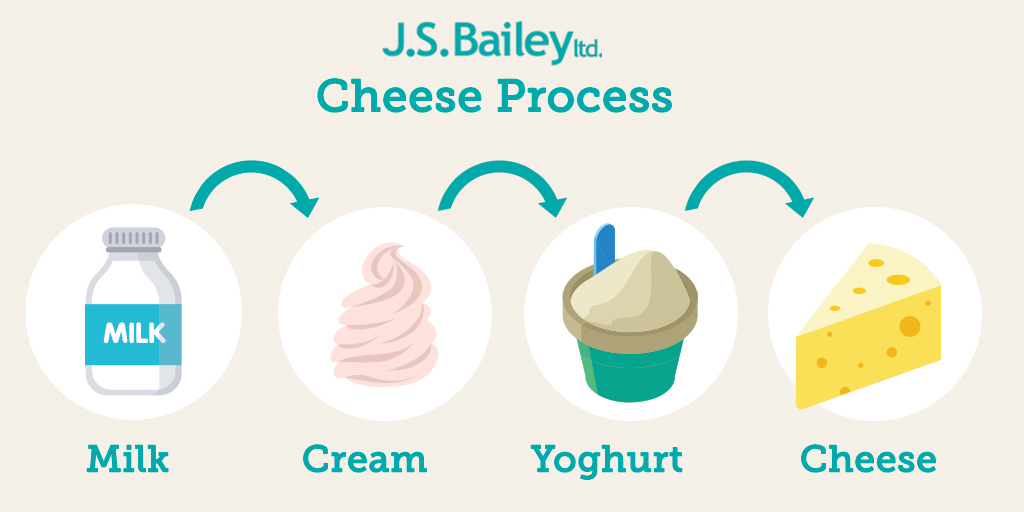 You may need to reduce the amount of lactose you eat or drink. Most people with lactose intolerance can eat or drink some lactose without symptoms.
You may need to reduce the amount of lactose you eat or drink. Most people with lactose intolerance can eat or drink some lactose without symptoms.
The National Institute of Diabetes and Digestive and Kidney Diseases (NIDDK) and other components of the National Institutes of Health (NIH) conduct and support research into many diseases and conditions.
Related News
Cellular response to bacteria may explain why infection sometimes causes stomach cancer
Identifying the distinguishing features of bile acid diarrhea
How gut bacteria use a bile acid to keep inflammation in check
More News
Related Conditions & Diseases
- Diarrhea
- Gas in the Digestive Tract
Additional Languages
This content is also available in:
- Spanish
Related Research
See more about digestive diseases research at NIDDK.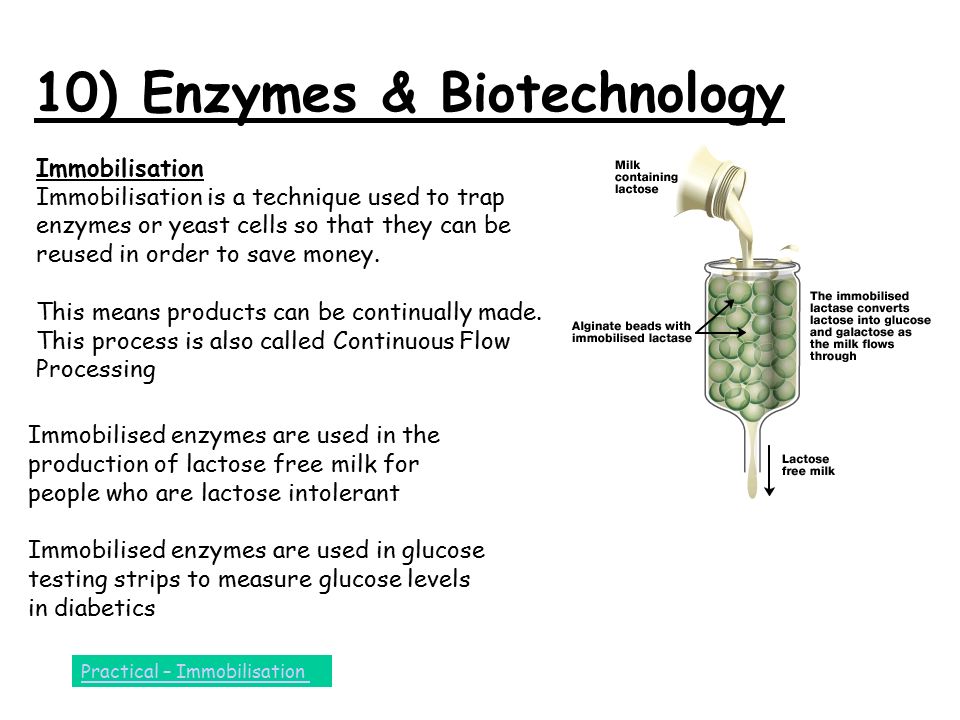
Next:
Definition & Facts
This content is provided as a service of the National Institute of Diabetes and Digestive and Kidney Diseases
(NIDDK), part of the National Institutes of Health. The NIDDK translates and disseminates research findings to increase knowledge and understanding about health and disease among patients, health professionals, and the public. Content produced by the NIDDK is carefully reviewed by NIDDK scientists and other experts.
The NIDDK would like to thank:
Rachel Fisher, M.S., M.P.H., R.D., NIDDK Office of Nutrition Research
Is milk evil? What causes lactose intolerance and how to check if you have it – explains specialist
You can often hear that for any ailment, any health problems, the first thing to recommend is to exclude dairy products from the diet. Cow’s milk was declared the enemy, filling supermarket shelves with coconut and oatmeal. Is milk really harmful? Should I completely cut him out of my life? And what is lactase deficiency?
Cow’s milk was declared the enemy, filling supermarket shelves with coconut and oatmeal. Is milk really harmful? Should I completely cut him out of my life? And what is lactase deficiency?
This text first appeared in the Talon.by blog.
What is lactose?
Ekaterina Moiseychuk
nutritionist
– Lactose is a sugar found in milk, dairy and sour-milk (in a smaller amount) products.
What is lactase deficiency?
– In the small intestine, lactose is broken down by the enzyme lactase into two sugars, glucose and galactose, which are further absorbed by our body.
When the enzyme lactase is not produced or its activity is reduced, lactose cannot be broken down and enters the large intestine unchanged. And then lactose becomes a breeding ground for bacteria and microorganisms that inhabit the large intestine, resulting in bloating, increased gas formation, diarrhea, discomfort and pain in the abdomen. Rarely, nausea and vomiting may occur.
Lactase deficiency can be primary or secondary.
- Primary lactase deficiency is a congenital condition, its cause is a breakdown of the gene that is responsible for the activity of the lactase enzyme.
- Secondary lactase deficiency can occur against the background of any diseases of the gastrointestinal tract and not only, due to which the activity of the lactase enzyme decreases. For example, it can be acute gastroenteritis (intestinal infections, food poisoning) or the consequences of a coronavirus. After recovery, enzyme activity is restored, and dairy products are again tolerated normally.
How is primary lactase deficiency diagnosed?
– Lactase deficiency can be confirmed by molecular genetic analysis or by determining the level of lactase in the intestine when taking a biopsy. These are complex, expensive methods, which are usually not used in everyday life, but are used mostly in scientific research.
A simpler method is breath test : you need to drink 25 g of lactose (in terms of about half a liter of milk with a fat content of 1.5%), and then the level of lactase is measured in the exhaled air every half an hour for 2-3 hours.
An even easier way to tell if you are lactose intolerant is to drink a glass of milk and just observe how you feel . If there is swelling, flatulence, pain, then we can safely assume lactase deficiency. If there are no unpleasant sensations, then there is no need to be examined in search of lactase deficiency.
It may be that a person has reduced activity of the lactase enzyme, but he consumes a few dairy products all his life, so he has no complaints and does not even suspect the existence of lactase deficiency.
How to live with lactase deficiency?
– Reduce the amount of dairy and sour-milk products: drink not a glass of milk, but half a glass, eat not a pack of cottage cheese, but a quarter. Even in the presence of lactase deficiency, it is not at all necessary to completely exclude dairy products from the diet, but by experience we ourselves need to determine exactly how much we can tolerate without discomfort.
Even in the presence of lactase deficiency, it is not at all necessary to completely exclude dairy products from the diet, but by experience we ourselves need to determine exactly how much we can tolerate without discomfort.
If even a very small amount of dairy products causes discomfort, only fermented milk products should be left in the diet, as they contain less lactose.
For good nutrition, to saturate the body with the necessary amount of calcium for an adult, 1-2 servings of dairy or sour-milk products are recommended daily. 1 serving is 200 g of yogurt, 250 ml of milk or 150 g of cottage cheese.
Lactase preparations can be found in pharmacies, but they are all dietary supplements and do not have clinically proven efficacy.
Is lactase deficiency dangerous?
– No. We feel lactose intolerance only when there are unpleasant manifestations from the gastrointestinal tract. But nothing serious happens in the body, no terrible myths about holes in the intestines need to be believed.
Even if you love milk so much that you are ready to endure, let’s say, a slight discomfort, drink to your health, it won’t cause any negative consequences for your health.
Is it possible to replace cow’s milk with vegetable milk?
– It is advisable to completely exclude cow’s milk from the diet, replacing it with vegetable milk, if a person is a vegetarian or if he does not consume protein products during fasting.
You can often hear that replacing cow’s milk with vegetable milk is recommended for the purpose of losing weight, but there is no point in this, because, as a rule, sugar is added to vegetable milk, and there will be no gain in terms of calories.
Which vegetable milk is healthier?
– Soy milk has the most protein and is often fortified with calcium, and the whole point of consuming dairy products is calcium.
Almond milk is low in protein but has a pleasant taste.
Coconut milk is good for its high content of healthy fats.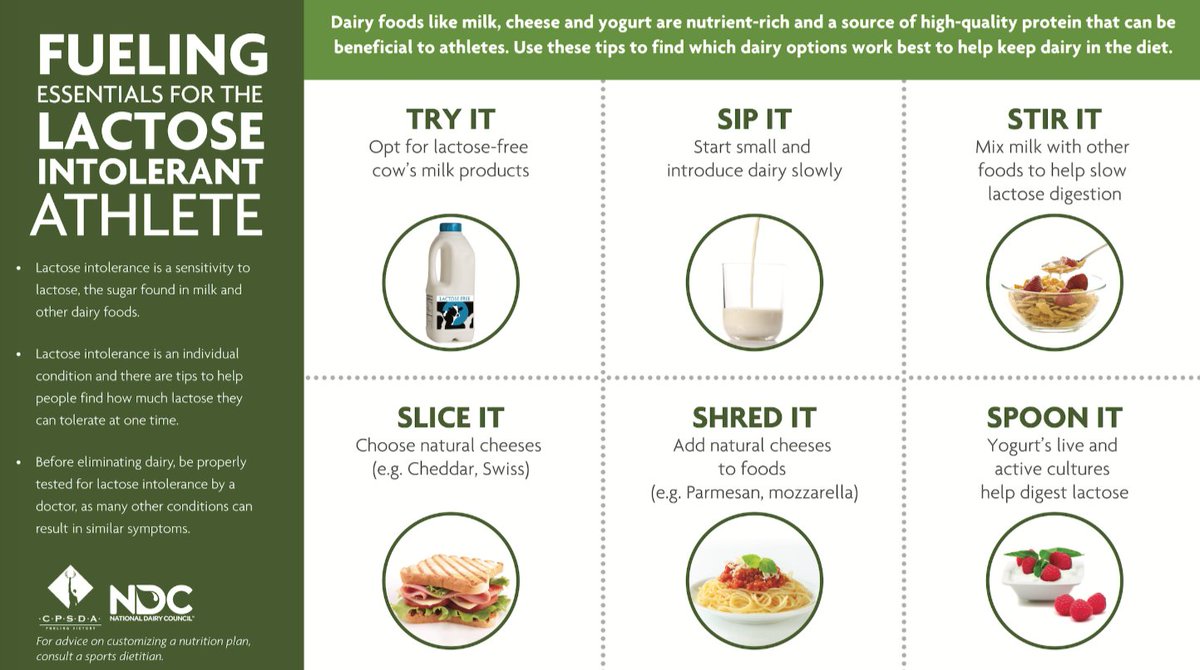 By the way, you can find a mixture of soy and coconut milk – and a lot of protein, and healthy fats.
By the way, you can find a mixture of soy and coconut milk – and a lot of protein, and healthy fats.
Oat and rice milks are tasteless and odorless, making them well suited for various dishes.
Three myths about milk and lactose intolerance
- If milk is heat-treated, is it easier to tolerate? Theoretically, during heat treatment, bonds between molecules are partially destroyed, but there are no recommendations that it is better to consume heat-treated dairy products.
- After 40 years, dairy products should be completely abandoned, as they cause disorders in the central nervous system. This is an unsubstantiated myth. But you need to know that with the age of the enzyme, lactase becomes smaller and its activity decreases, which again causes discomfort. If these manifestations from the gastrointestinal tract are present, it is enough to reduce the consumption of dairy products, selecting the amount tolerable.

- With rashes on the face, the first thing to do is to exclude dairy products from the diet. There are indeed recommendations to give up dairy products and sugar for the treatment of acne for a while. An excess of simple carbohydrates (including milk, because lactose is also sugar) can cause increased oiliness of the skin and blockage of the sebaceous glands. But there are no studies that would prove a direct relationship between dairy products and acne. Nevertheless, the individual reaction of the body to one or another factor is never excluded.
Photo: Freepick.com
share
How do you know if you are lactose intolerant?
06/08/2022
If you suspect that you are lactose intolerant, contact your doctor . Lactose intolerance can be suspected based on the symptoms, but doctor will give you an accurate diagnosis and tell you what to do if you are right and you really have problems with your ability to digest lactose.
Lactose is a sugar molecule in milk. Lactose intolerance is a condition in which the body is unable to digest this molecule. Symptoms that appear in this case are usually associated with problems in the gastrointestinal tract.
What causes lactose intolerance?
Lactose intolerance is caused by a lack of the intestinal enzyme, lactase. In order for lactose to be absorbed from the intestine , it must first be broken down into two smaller sugars: glucose and galactose. The intestinal enzyme lactase breaks down lactose into glucose and galactose; it is located on the surface of the cells lining the small intestine.
Lactase deficiency or lack of lactase activity prevents the breakdown of lactose and also prevents its absorption. This is the reason why lactose intolerance occurs.
Types of lactose intolerance
There are several types of lactose intolerance: primary, secondary, developing and congenital.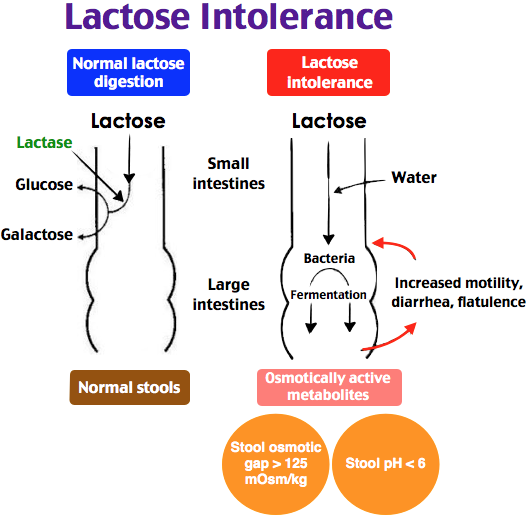
- Primary intolerance is the most common and means that lactase production has decreased with age.
- Secondary intolerance means that the lactase deficiency is the result of a problem with the small intestine.
- Congenital lactose intolerance is the rarest and occurs when a baby is born with little or no lactase activity.
Symptoms occur as soon as milk is given to the child, and children suffering from this disease need special lactose-free milk. Developing intolerance occurs in premature babies. When a baby is born with minimal levels of lactase, it takes time for enough lactase to be created in the digestive system, which causes temporary lactose intolerance. However, this condition disappears as the child grows.
Symptoms of lactose intolerance
Symptoms are similar in adults, toddlers and babies, but some people don’t have specific symptoms because the severity of lactose intolerance symptoms depends on how much lactose you consume. In other words, the more lactose you consume, the more likely it is that symptoms will develop. In addition, the severity of symptoms can vary between different people.
In other words, the more lactose you consume, the more likely it is that symptoms will develop. In addition, the severity of symptoms can vary between different people.
While some with lactose intolerance may consume small amounts of lactose without developing symptoms, others may experience severe symptoms with minimal lactose intake. Here are 10 symptoms of lactose intolerance.
- Bloating
Bloating usually occurs when the digestive tract is subjected to stress of any kind. You experience a feeling of a sealed abdomen or fullness when the abdominal region swells. Not only indigestion , but also digestive disorders such as lactose intolerance can lead to bloating . When products containing lactose pass through the body, the bloating decreases by itself. - Grumbling stomach
Many lactose intolerant people complain that their stomach grumbles loudly, making a loud, rumbling noise that can be heard from outside. When people with this condition consume dairy products, an excess amount of gas is produced in their intestines , resulting in a loud noise.
When people with this condition consume dairy products, an excess amount of gas is produced in their intestines , resulting in a loud noise. - Abdominal pain or cramps
When people with lactose intolerance consume milk or dairy products, they often experience severe pain or cramps at stomach . This symptom begins an hour after the consumption of dairy products. The cramps are usually sharp and numbing and can cause severe discomfort. - Flatulence
When the small intestine cannot digest lactose, it carries food particles to the large intestine in an under-digested state. Intestinal bacteria begin to ferment the undigested food and this causes gas to form. The body will then naturally expel this gas through the anus. In addition, people with lactose intolerance tend to produce a very odorous gas. - Nausea
In those who cannot tolerate milk-containing food particles, they can be found in the intestines without any digestion. This can cause the body to expel food and the person will feel nausea . The person can either give in to the impulse or wait for the feeling to pass. It depends on how strong or weak the reflex is.
This can cause the body to expel food and the person will feel nausea . The person can either give in to the impulse or wait for the feeling to pass. It depends on how strong or weak the reflex is. - Vomiting
Stomach upset may cause a person to feel nausea and sometimes nausea may be accompanied by vomiting. Some people stop experiencing symptoms after they vomit, as the feeling of fullness and other discomfort in the abdomen is relieved. - Abnormal stools
Another common symptom of lactose intolerance is diarrhea . When the small intestine cannot absorb undigested lactose, the lactose passes into the large intestine. The colon then absorbs the water from the undigested lactose in the stool and converts it into a more solid form. Colon bacteria then break down the lactose molecules, producing a liquid substance and a gas. Therefore, many people have loose and liquid stools.
Therefore, many people have loose and liquid stools. - Painful bowel movements
This occurs when a person goes to the toilet frequently and the bowel movements are strong. The anus becomes tender and sore, and sometimes blood may appear in the stool. However, this happens very rarely, and this scenario is typical for people with severe lactose intolerance who consume very large amounts of dairy products. - Weight Loss
For some people, lactose intolerance goes undiagnosed for a very long time, especially if it comes on suddenly, perhaps after some other disease has destroyed the function of the small intestine. In this situation, people may continue to consume dairy products and not know they are harmful. Severe diarrhea due to lactose intolerance can lead to weight loss. For this reason, weight loss accompanied by other digestive symptoms may be a sign of lactose intolerance.

 Cheeses such as Parmesan and Granna Padano are naturally lactose-free and may be tolerated by most people.
Cheeses such as Parmesan and Granna Padano are naturally lactose-free and may be tolerated by most people. Meat and meat products must come from the forequarters of ruminant animals with split hooves, such as cows, lambs, goats, sheep, deer, and oxen.
Meat and meat products must come from the forequarters of ruminant animals with split hooves, such as cows, lambs, goats, sheep, deer, and oxen. They include fish, eggs, grains, nuts, fruits, and vegetables.
They include fish, eggs, grains, nuts, fruits, and vegetables. Wheat is one of the most common allergens, leading to adverse reactions to wheat ingredients (4).
Wheat is one of the most common allergens, leading to adverse reactions to wheat ingredients (4).
 When people with this condition consume dairy products, an excess amount of gas is produced in their intestines , resulting in a loud noise.
When people with this condition consume dairy products, an excess amount of gas is produced in their intestines , resulting in a loud noise. This can cause the body to expel food and the person will feel nausea . The person can either give in to the impulse or wait for the feeling to pass. It depends on how strong or weak the reflex is.
This can cause the body to expel food and the person will feel nausea . The person can either give in to the impulse or wait for the feeling to pass. It depends on how strong or weak the reflex is. Therefore, many people have loose and liquid stools.
Therefore, many people have loose and liquid stools.